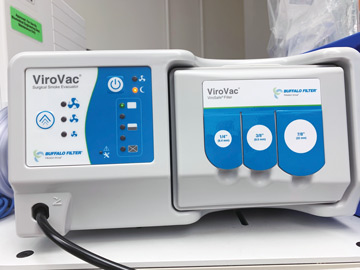On April 17, the Trump administration issued a three-step plan for reopening the American economy as parts of the nation begin to emerge from the coronavirus outbreak. The plan's first phase green lighted elective surgeries performed in outpatient facilities where COVID-19 cases are decreasing, truly welcome news for idle surgical teams. Since the announcement, nearly half of U.S. states have been given the go-ahead to resume elective surgeries. The staggered reopening of outpatient facilities amid these uncertain times has left many surgical administrators with more questions than answers.
To help guide your ramp-up to resuming surgeries, the Association of periOperative Registered Nurses (AORN) teamed up with the American College of Surgeons (ACS), the American Society of Anesthesiologists (ASA) and the American Hospital Association (AHA) to create a roadmap that guides the readiness, prioritization and scheduling of elective surgeries to ensure maximum patient safety (osmag.net/6vPaBF). Use the roadmap to answer these key questions before reopening your ORs:
- Are we ready to reopen? There should be a sustained reduction in the rate of new COVID-19 cases in your community for at least 14 days, according to the roadmap. But even if your state's governor has deemed it safe to resume elective cases, expect a lag between when you decide to reopen and when your facility will be ready to start performing surgery.
"It might take a full week to reset for surgery," says Julie Maiden, the director at Surgical Eye Center in Greensboro, N.C. First, she says, perform a deep terminal cleaning with EPA-approved cleaning solutions. Then, make sure every staff member is aware of the physicians' and anesthesiologists' guidelines for appropriate patient selection.
Ms. Maiden also recommends addressing the many logistical issues involved in reopening ORs after a significant hiatus, including ensuring every piece of equipment is in good working order, and checking expiration dates on medication vials and supplies.
"Touch base with your vendors before reopening," says Ms. Maiden.
"because there may be special circumstances regarding certain pieces of equipment due to the down time." For example, she cites the sterilizers her facilities uses and how they will have to perform three test cycles before the equipment is ready to go again.
- How and when will we test? The only way to ensure the safety of patients and your staff is through rigorous COVID-19 screening and testing protocols, according to Vangie Dennis, RN, MSN, CNOR, CMLSO, executive director of perioperative services at WellStar Atlanta Medical Center & Atlanta Medical South. Her home state of Georgia has been a leader in reinstituting elective surgeries, her facility's testing protocols are already established and go well beyond standard temperature checks and questionnaire screenings.
"We require system-level COVID-19 testing for any patient coming in for surgery," says Ms. Dennis. "Patients must complete testing within 96 hours of their scheduled procedure to ensure there are no gaps in the schedule. ?Testing is completed at remote sites and a drive through located outside the hospital."
- Do we have proper PPE? As this issue went to press, Lakeland (Fla.) Surgical & Diagnostic Center was gearing up to reopen — and it was taking great measures to ensure staff safety. "We're requiring our staff to wear N95 masks at all times, except when they're on lunch," says Nikki Williams, RN, CNOR, the OR director at Lakeland. In addition to the masks, OR staff will also wear full scrub jackets, head coverings, gloves and isolation gowns. Foot coverings or booties will also be required for staff who don't keep their work shoes in their lockers — a policy change that's bound to impact busy surgeons who come in and out of the facility. And even with all the PPE in place, Lakeland adding an extra layer of protection by limiting staff exposure during high-risk aerosolizing procedures like intubations, during which only anesthesia staff can be present in the OR. The process will also involve a plastic intubation box placed around the patient.
.svg?sfvrsn=be606e78_3)

.svg?sfvrsn=56b2f850_5)